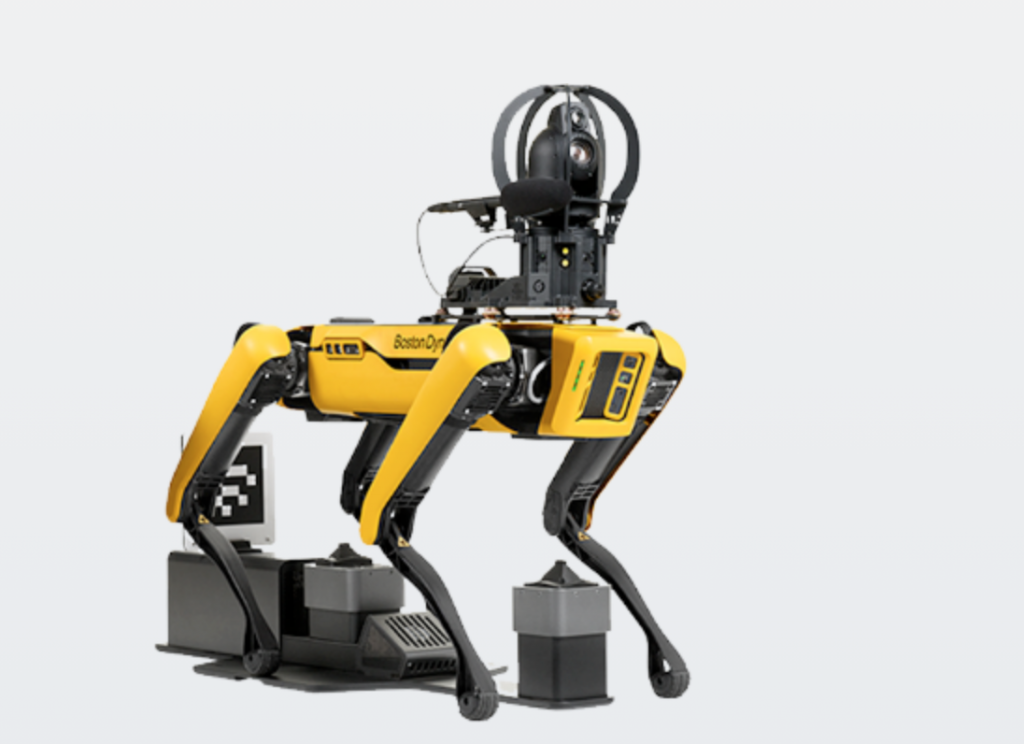
SPOT, a robotic K9, has joined the police force in St. Petersburg, Florida.
San Francisco, Oakland Ponder How to Regulate Robotic Police Weapons
When they say “unleash the dogs of war” these days, what police officers are referring to is absolutely terrifying.
Larger police departments in the United States have the capacity to arm remote-controlled robots with lethal weaponry and send those robots in to kill suspects. But some city governments are questioning whether they should be able to use that option.
Six years after the Dallas Police Department used a bomb disposal robot to slay a sniper, San Francisco is finally having that discussion. And the liberal city’s answer appears to be yes. Here’s what you need to know about police and killer robots:
They are real and they are deadly.
After police were fired upon in Dallas in July of 2016, the robo-dog was used to take out the shooter after he killed five officers, while wounding seven more, plus two civilians. The police strapped an explosive device to the manipulator arm of a Remotec F5A robot, sent it into the garage, and killed the suspect.
“As far as I know, it appears to be the first intentional use of a lethally armed robot by the police in the United States,” Elizabeth Joh, a law professor at the University of California at Davis, told The Guardian at the time. The military has used improvised lethal robots, and “there may be some story that comes along” about police doing the same, “but I’d think I’d have heard of it,” agreed war technology expert Peter Singer.
We are all aware of these types of weapons. A lengthy article from theweek.com goes deep into the issue. The rules that police agencies should follow when using super weapons such as armed robots are not clear.
California passed Assembly Bill 481 in 2021, requiring police and sheriff departments in the state to get approval from their governing bodies for buying or, crucially, using military-grade weapons like armored vehicles, water cannons, and yes, remote-controlled robots.
Writer Peter Weber tries to shed light on how and when these are used, and who has the legal oversight for their use. Some of the points are:
Did anyone come up with a framework for police using killer robots?
The ACLU came up with some recommended guidelines, but so far no other U.S. police force has followed the Dallas Police Department’s lead, so the U.S. just sort of moved on.
What kinds of lethal weapons can police robots use?
The San Francisco Police Department says it has 12 functioning robots it acquired between 2010 and 2017, most of them used for defusing bombs or dealing with hazardous waste. None of its robots are currently armed with lethal options, but it has the same Remotec robot the Dallas PD used, and “newer Remotec models have an optional weapons system,” The Verge reports. “The department’s QinetiQ Talon can also be modified to hold various weapons,” including grenade launchers and machine guns.
What do supporters of lethal police robots say?
The San Francisco supervisors who voted yes, and other backers of the proposal, agreed with the SFPD that under certain rare circumstances, using lethal robots might make sense.
Mayor Breed agreed. “If the police are called to serve in a situation where someone intends to do harm or is already doing harm to innocent people, and there is technology that can help to end the violence and save lives, we need to allow police to use these tools to save lives,” her office said in a statement.
What do opponents say?
Opponents run the gamut from civil libertarians and others worried about the creeping militarization of the police to people concerned about racial justice and those blanching at the specific idea of police using robots to kill civilians.
“We are living in a dystopian future, where we debate whether the police may use robots to execute citizens without a trial, jury, or judge,” Tifanei Moyer, an attorney with the Lawyers’ Committee for Civil Rights, told Mission Local.
The article attempts to take both the policing viewpoint as well as that of civilians. It’s a case of AI being used for good but the power being turned loose could be lethal in the wrong hands.
read more at theweek.com







Leave A Comment